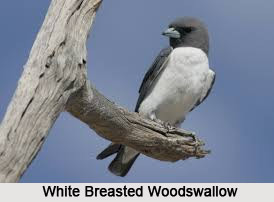 White-Breasted Woodswallow is an Indian bird that bears a scientific name "Artamus leucorynchus" and breeds in the Andaman and Nicobar Islands.
White-Breasted Woodswallow is an Indian bird that bears a scientific name "Artamus leucorynchus" and breeds in the Andaman and Nicobar Islands.
Concentration of White-Breasted Woodswallow
White-Breasted Woodswallow is a small passerine bird which breeds from the Andaman Islands east through Indonesia and northern Australia.
Description of White-Breasted Woodswallow
The name "Woodswallow" is a misnomer as they are not closely related to true swallows. Instead, White-Breasted Woodswallow belongs to the family Artamidae, which also includes butcherbirds, currawongs and the Australian magpie. The species White-Breasted Woodswallow was first described by Linnaeus in 1771, its specific epithet derived from the Ancient Greek words leucos `White`, and rhynchos `Bill`.
Structure of White-Breasted Woodswallow
The soft-plumage of White-Breasted Woodswallow is charcoal grey apart from the white underparts that give the species its English and scientific names, in contrast to the related great woodswallow whose upper side is a more glossy black. Despite its brush-tipped tongue, usually associated with nectar feeders, it catches insects on the wing.
Size of White-Breasted Woodswallow
The White-Breasted Woodswallow has large, pointed wings. It is very agile in powered and gliding flight. This is a nomadic species, following the best conditions for flying insects, and often roosting in large flocks.
Nests of White-Breasted Woodswallow
The nest of White-Breasted Woodswallow is a small structure built in the hollow formed by a broken branch, or in a forked branch. The normal clutch is three eggs.



















